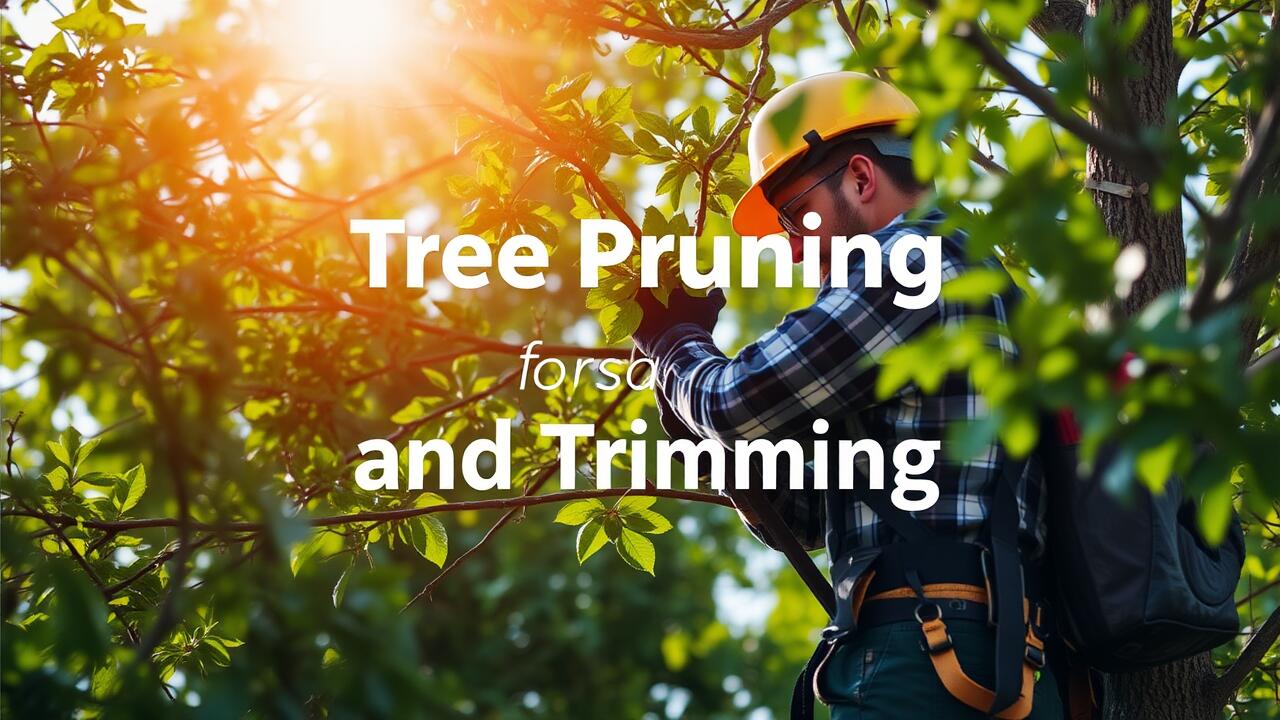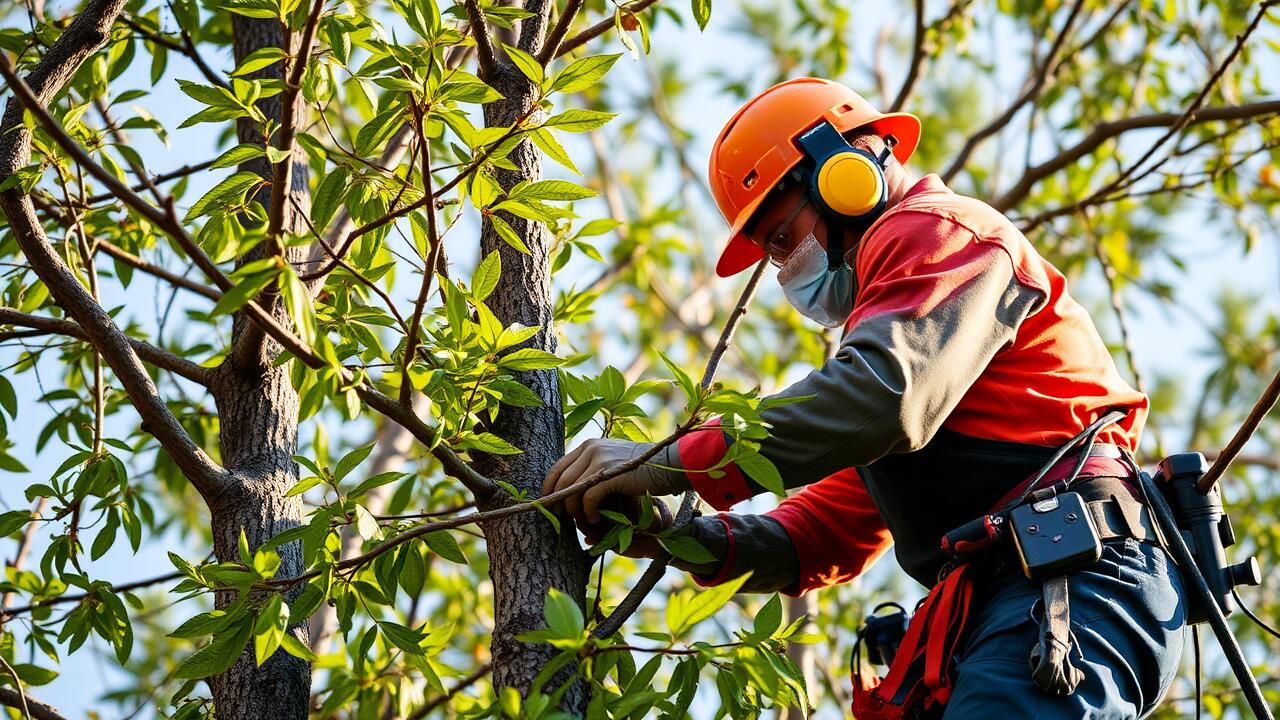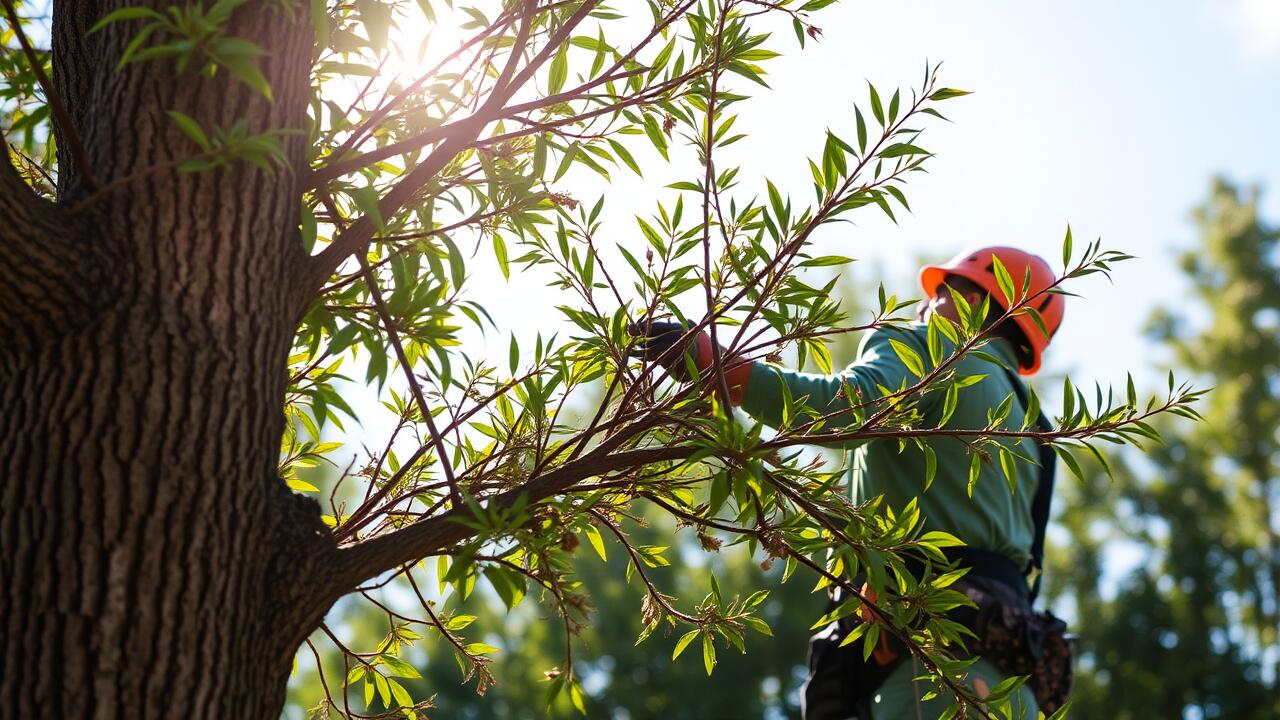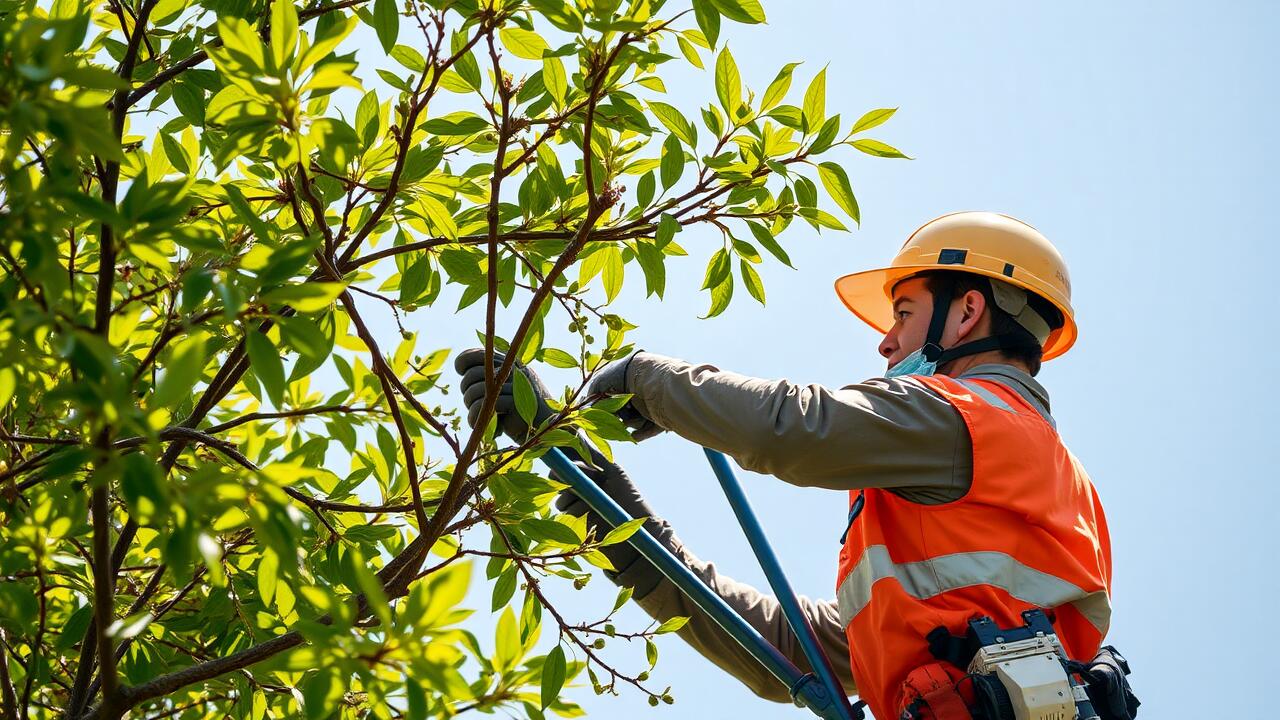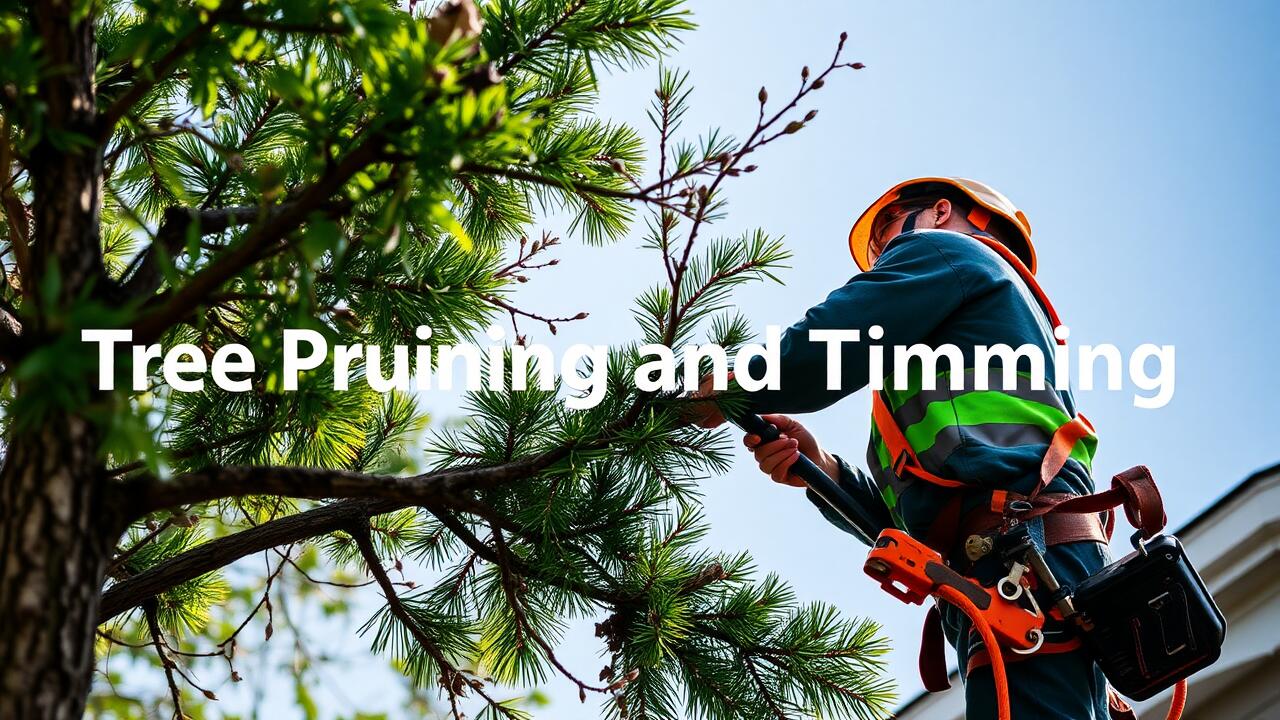
How to Prune Flowering Plants
Pruning flowering plants requires careful attention to timing and techniques to ensure optimal blooms. It is essential to understand the specific flowering habits of the plants you are working with. Some plants, like early spring bloomers, benefit from pruning immediately after flowering, while others may need to be pruned in late winter or early spring before new growth begins. Using sharp, clean tools is critical to making proper cuts that minimize damage and promote healing.
When considering professional assistance, searching for “Tree Pruning and Trimming near me” can yield options for those who prefer expert guidance. They can help identify the best pruning strategies tailored to each plant's needs. Seasonal pruning can enhance air circulation and sunlight penetration, leading to healthier growth and more vibrant flowers. Following a proper pruning schedule contributes significantly to the overall aesthetics and vitality of flowering plants in your garden.
Timing and Techniques for Optimal Blooms
Timing is crucial when it comes to pruning flowering plants to ensure optimal blooms. The best practice is to prune right after flowering. For many spring-blooming plants, this means trimming them in late spring or early summer, once the flowers have faded. However, for summer-bloomers, pruning should ideally happen in late winter or early spring before new growth appears. Understanding the specific blooming cycle of each plant will help guide your timing, allowing you to maintain vibrant and healthy blooms.
In addition to timing, employing the right techniques can enhance flowering results. Clean, sharp cuts encourage quick healing and minimize damage to the plant. Always make your cuts at a slight angle above a bud that faces outward, promoting an open growth structure. Proper thinning out will also allow more light and air to reach the remaining branches, which can invigorate flower production. If you're unsure about proper techniques or need hands-on assistance, searching for “Tree Pruning and Trimming near me” can connect you with local experts who can offer personalized guidance.
Pruning Shrubs for Better Shape
When pruning shrubs for better shape, timing is essential. The ideal time to prune depends on the type of shrub. Many flowering shrubs benefit from pruning immediately after they bloom. This encourages new growth and enhances next year’s display. For evergreen shrubs, late winter or early spring is often the best bet.
Techniques such as thinning cuts help maintain an attractive silhouette. Focus on removing older branches that can impede new growth. Using the right tools is crucial to avoid damaging the plant. If unsure, local services specializing in "Tree Pruning and Trimming near me" can provide guidance and assistance in achieving the desired shape.
Strategies for Shaping and Thinning
Shaping and thinning shrubs involves a blend of strategic cuts aimed at enhancing their appearance while promoting health. When tackling this task, it is essential to identify where to make cuts to encourage a balanced shape. Begin by observing the natural growth pattern of the shrub. Target branches that are crossing or growing inward, as these can create congestion. By removing these branches, light can penetrate more deeply, and air circulation improves, reducing the likelihood of disease.
Thinning out dense areas ensures that the shrub maintains a lively and open structure. Use sharp, clean tools to make precise cuts, as ragged edges can serve as entry points for pests and diseases. It's often beneficial to consult a landscaping professional for guidance, particularly for larger or more complex shrubs. Searching online for "Tree Pruning and Trimming near me" can yield local experts who can provide specific recommendations tailored to the needs of your plants.
Managing Tree Growth with Pruning
Pruning is essential for managing tree growth and ensuring their overall health. Regular trimming helps control the size of the tree, allowing for better sunlight penetration and air circulation. When branches become overcrowded, it can lead to issues such as disease and pest infestations. By routinely assessing the tree's structure and removing unnecessary limbs, you promote a strong framework that supports healthy growth and development. Knowing when to prune is equally important; late winter or early spring is generally the best time for most deciduous trees, as this can stimulate robust growth during the warmer months.
If you're considering professional assistance, searching for "Tree Pruning and Trimming near me" can yield a variety of local services. Experienced arborists can offer expert guidance tailored to the specific needs of your trees. This not only ensures proper techniques are used but can also safeguard against improper cuts that might harm the tree. Keeping trees well-maintained enhances their beauty and longevity while also benefiting the surrounding landscape and ecosystem.
Techniques for Maintaining Tree Health
Maintaining tree health requires careful consideration of pruning techniques. To encourage strong growth, it is essential to remove dead or diseased branches. This not only improves the tree’s appearance but also reduces the risk of disease spreading to healthy parts. Pruning should be done at the right time of year, often in late winter or early spring, depending on the tree species. Keeping cuts clean and angled helps promote faster healing and minimizes the risk of infections.
When planning for tree care, many people search for “Tree Pruning and Trimming near me” to find local experts. Professionals can assess the unique needs of each tree, ensuring that pruning promotes overall vigor and structure. Regular maintenance will lead to a healthier tree, supporting its growth and resilience against pests and harsh weather. Knowing when and where to seek help can make a significant difference in the health of your trees.
FAQS
What is the best time to prune flowering plants?
The best time to prune flowering plants is typically right after they bloom, as this allows for optimal growth and ensures that you don’t remove buds that will produce flowers for the next season.
What tools are needed for proper pruning?
Essential tools for pruning include sharp pruning shears, loppers for thicker branches, a pruning saw for larger limbs, and gloves to protect your hands.
How do I know which branches to prune on a shrub?
When pruning a shrub, look for dead or damaged branches, those that cross over one another, or branches that are growing inward. Aim to create an open center to allow light and air circulation.
Can pruning harm my plants?
Yes, improper pruning techniques can harm plants. It's essential to make clean cuts, avoid removing too much foliage, and prune at the right time to minimize stress on the plant.
How often should I prune my trees?
Trees should be pruned at least once a year, but the frequency may vary depending on the type of tree and its growth rate. Regular maintenance helps maintain their shape and health.
